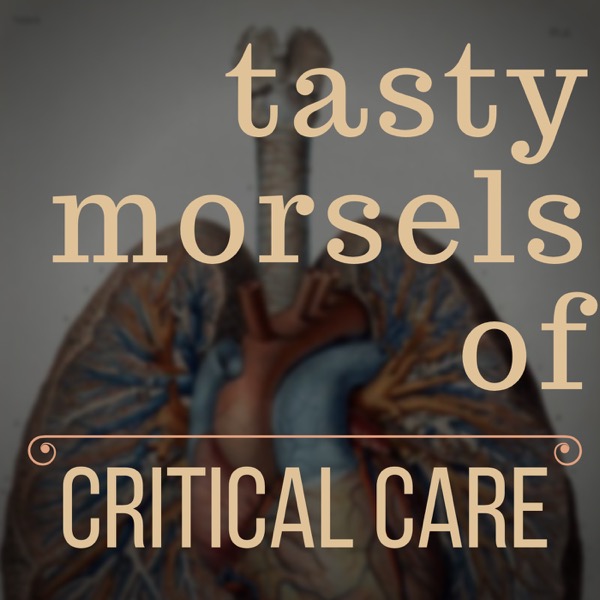Tasty Morsels of Critical Care 032 | Nutritional requirements in ICU
Tasty Morsels of Critical Care - A podcast by Andy Neill - Mondays

Welcome back to the tasty morsels of critical care podcast. A meandering monologue through critical care fellowship exam preparation. Today’s podcast is mostly taken from Oh’s manual Chapter 96 covering critical care nutrition. Something we all know and love deeply for exams and then immediately outsource to our dieticians the moment we get the chance. Perhaps the first take home figure is 25kCal/kg/day. This has been around as a recommended energy intake since the late 90s. And like most nutritional things it’s not exactly stellar in its support from the literature. There has been a recent tread in trials towards hypocaloric feeding that have hinted towards benefit at feeding to a lower target with purported mechanisms including that higher targets suppress autophagy which is an important part of killing nasty organisms. The lower target has not panned out as yet but it is worth pointing out that we rarely actually achieve the 25kCal/kg/day that we aim for, so we are probably inadvertently underfeeding people at baseline. On the other side of this it’s clear that if we have prolonged periods of not meeting targets then patients clearly do worse. We could, of course, measure the energy requirements the patient needs instead of a blanket recommendation for all. And there are a variety of methods for doing this. Oh describes indirect calorimetry as “a rather burdensome gold standard” and it seems all the units I have worked in have taken this on board and simply not bothered with getting the metabolic cart needed for doing it. This device, when connected to the vent allows measurement of O2 consumption and CO2 production, and can calculate energy expenditure. The other options for estimating energy expenditure include a bunch of equations of which the Penn-State one is recommended as the best of a bad bunch and finally you can calculate using the reverse Fick method which needs a PA catheter to measure O2 consumption. I mention these only as useful options for a candidate to scribble down in answer to a question rather than perform them in real life. As the good book says, man shall not live by kCal alone so we need to consider what else the patient needs nutritionally. First off – protein. For normal people walking around their everyday business not attached to pressors or a ventilator the daily protein intake is around 0.8g/kg/day. In the critically ill this has been bumped up to at least 1.2g/kg/day or even has high 2g/kg/day in some of the super catabolic patients such as major burns. For bonus points remember that patients require all the micronutrients such as vitamins, thiamine and elements that come as part of a healthy diet. Most enteral formulations will contain these and it’s really in those on parenteral nutrition that you need to stress a little more about it. When calculating the energy intake we need to consider all the sources of intake. Energy is not just glucose but will include the protein that we give and also some of the infusions we use for example the fats in the propofol infusion (which comes in at ~1kCal/ml) and the glucose in the 5% dextrose we’re giving to correct the hypernatraemia. References Oh’s Manual Chapter 96 Deranged Physiology – there is a lovely section on the theoretical maximum and minimum amounts of each class needed including some lovely stuff on inuits and zero carb diets
